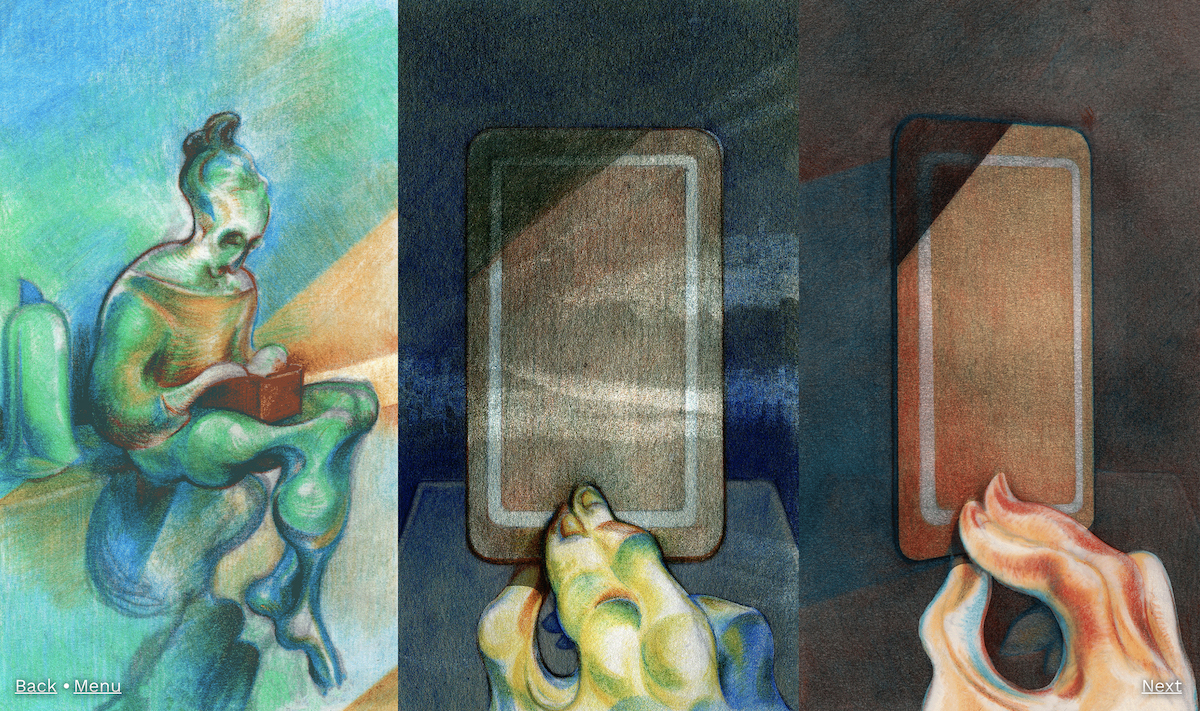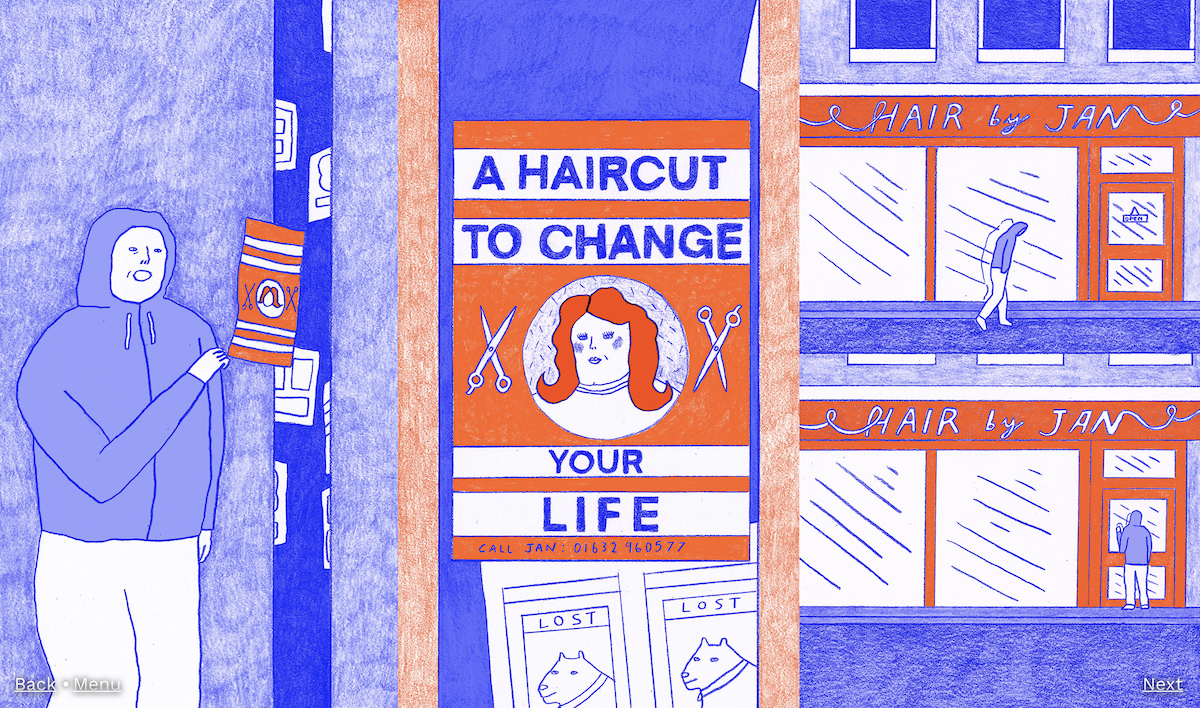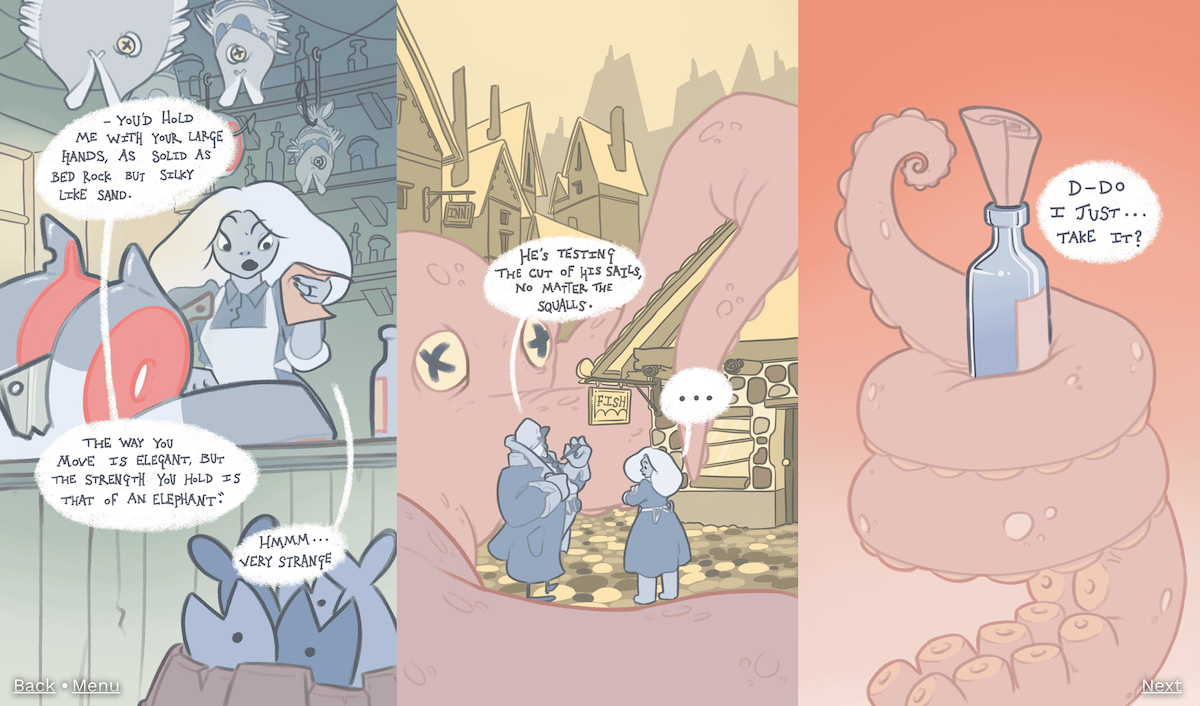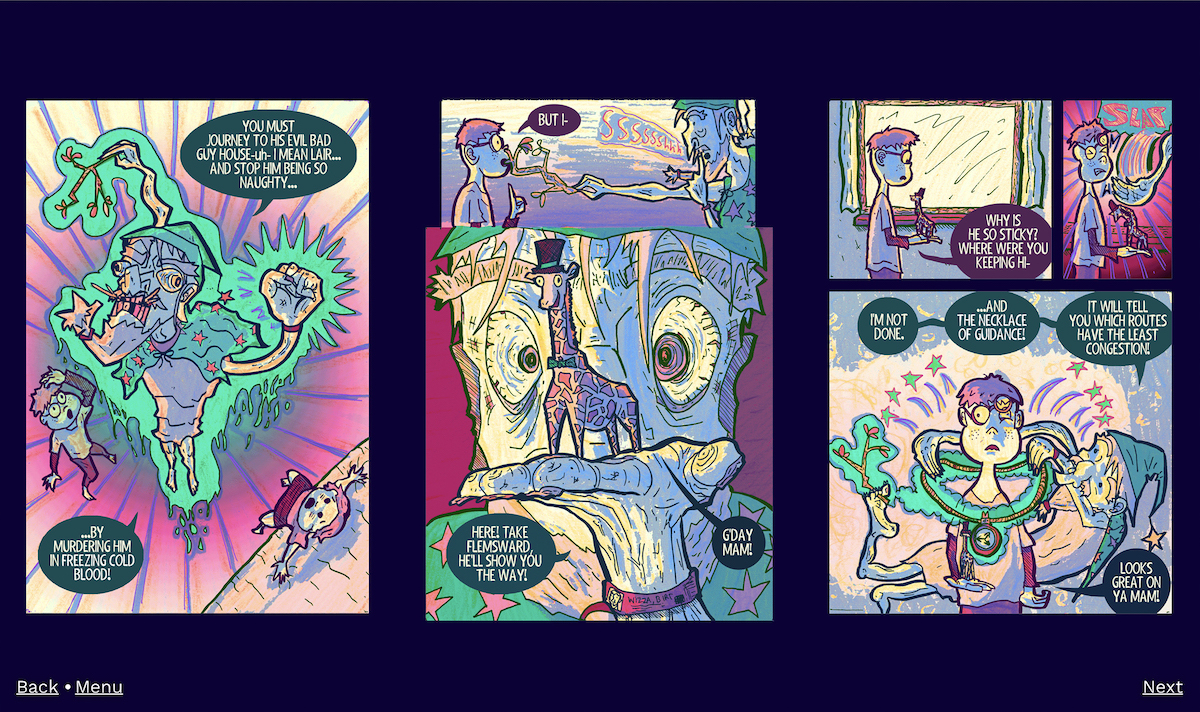
It is fair to say that recent events have caused us to spend an unprecedented amount of time on our devices. With IRL communication stalling; non-essential shops shuttered for months; constant news broadcasts calling for endless scrolling; and confined living spaces testing even the most solid of relationships, we can be forgiven for spending more time than ever glued to our screens.
Unfortunately, this enforced solitude has revealed how digital experiences are often nothing but a facsimile of the originals. Zoom calls and Instagram DMs are no substitute for dinner dates with friends and loved ones, just as “digital exhibitions” fall short of any real connection to works of art. These online approximations have become the norm, but it is rare to see something that actually utilizes the digital realm to maximum effect.

A new project by BA and MA Illustration students at Falmouth University is one such rarity. Their new comic series, titled The Promise, is designed to be viewed on a phone or tablet (as well as their website), making the most of the portrait dimensions we have all become accustomed to, as well as the navigation patterns that are now embedded in our psyche, and the responsive nature of our devices.

Informed by the Mould Map webcomic, students combine not only traditional two-dimensional graphics, but sound, moving image, and unorthodox narrative structures. The result is an incredible mix of familiar story telling, as seen in Louis Hey’s A Fisherman’s Tale, and experimental approaches, such as the wordless, atmospheric vision conceived by Bart D’Angelo (with sound by Federico Pipia).
“The narrative is shifted to a territory with much more freedom, where ideas and images can move in every direction”

In short, the digital framework offers a truly malleable form of comic making that steps beyond the confines of the printed page. “The narrative is shifted to a territory with much more freedom, where ideas and images can move in every direction and follow their own rules,” says D’Angelo. “The only canon that stands is the essential discursive direction of reading, but also that one blurs when you have more panels on the same page/screen, and images start to speak together.”
When the brief was set, with the open-ended themes such as “marketing hype and miracle cures; the campaign trail; extinction; and ecological collapse” serving as starting points, the students had no idea that we would soon enter a variety of global crises. In recent times our phones have become even more vital communication devices, not to mention essential records of oppression and injustice.

What is more, forms of commerce and creativity have had to diversify, which isn’t necessarily a bad thing. As Eddy Nicholls explains, it is good to “wake up to the joy of zero printing costs paired with a potentially infinite audience. What’s more, if you carry around one of your own books with you 24/7 you get funny looks, but with a webcomic formatted for mobile, the potential to show off your storytelling chops to unwitting victims is increased exponentially.”
The Promise
VISIT WEBSITE





